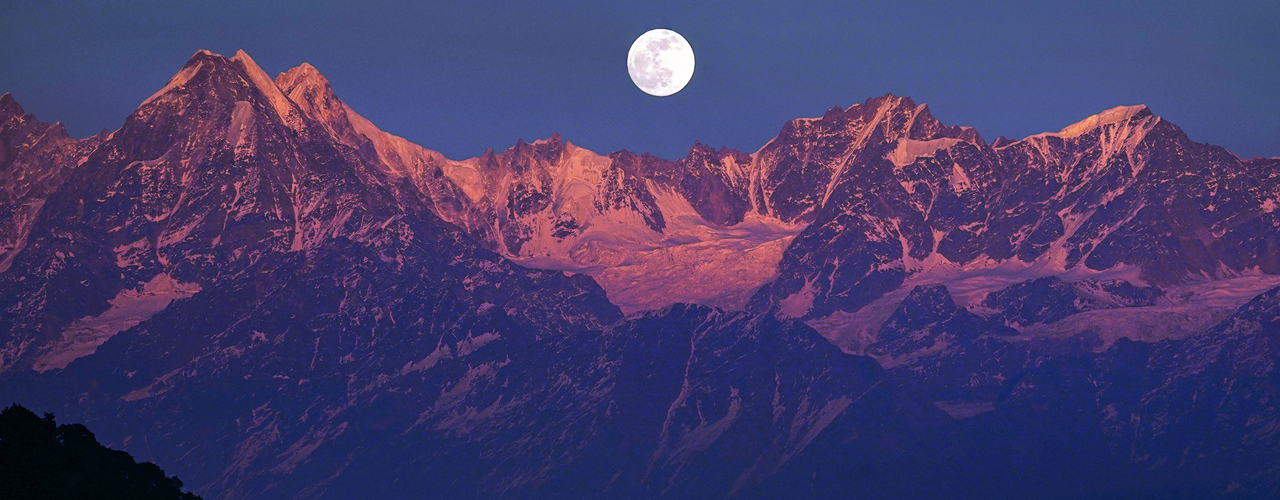
“Without culture, and the relative freedom it implies, society, even when perfect, is but a jungle. This is why any authentic creation is a gift to the future.” - Albert Camus
The culture of the contemporary Kumaon is a mishmash of variedimpacts from the indigenous population as well as from the immigrants to thisprovince.Subsequently, the myths, dialects, languages, folk literature, festivals, fairs and forms of ingenious expression are instances of the creative impacts of the diverse cultural clusters that create Kumaon.
The essence of Uttarakhand is amazingly arrested in the affluent customs, traditions, fairs and festivals, earnestly celebrated with enormous pomp and show across the state. The cultural heritage of this mountain state is devotedly reflected in the vigorous folk music, songs & dances which are enjoyed by the hard working hill people. Uttarakhand’s wide-ranging ethnicity has fashioned a rich literary tradition in several languages including Hindi, Jaunsari and Rang-Lo.
The dances of the region are linked to the routinr life of the people and display innumerable humanpassions. Some of the well-known dance forms of Uttarakhand are LangvirNtriya, BardaNati, HurkiyaBaul, JhumailaChauphula and Chholiya.
“O wayfarer! Yearn finds quench, not in meadows, seashores or altitude of mountain peaks; but when being becomes dance.”― Shah Asad Rizvi
Kumaon encompasses extremely affluent tradition of folk literature. The storytelling offers wonderful and awe inspiring tales of chivalric heroes, local myths/beliefs, national myths, exemplary heroines, umpteen exemplum of the bravery and courage that the hills y nature and deeds of bravery. Anonymous poets wrote these songs which related to the deeds of gods-goddesses, creation of earth, local heroes/dynasties and several characters belong to the magnanimous epics of the Mahabharat and the Ramayan. Some of those songs are also associated with exceptional love story of Rajula and Malushahi, the heroism of Sangram Singh Karki, the daring deeds of the twenty two Bafaul brothers and the unreal terrains across the Himalaya. These songs are sung by experts by considering the local history.
One can also encounter songs on agricultural happenings and miscellaneous cultural and social festivals. The list of the variety of the songs that are agricultural, pastoral and children’s songs also showcases the preservedconnection between man and his surroundings. These songs also portraythe really exceptional natural exquisiteness of this region. The innumerable and commendable types of folk songs namely the invitation songs -bhagnaul, nyauli, chanchari, jhora and chhapeli are few of the breathtakingly vibrant experiences one can derive.
You will find the word ‘suva’ or parrot that denotes lovers, whereas in the ‘riturain’ songs, the ‘nyauli‘ bird denotes brothers and sisters. Nyauli is also recognized as a style of singing. Some of the greatest singers of Kumaon include Mohan Singh Reethagari, Gopidas, Chakra ram Damai and Jaitram. If one talks about the written literature of Kumaon then the most famous names are Krishna Pandey, LokRatna Pant 'Gumani', Shiv Dutt sati, ShyamaCharanDutt Pant, Gorda, Ram Dutt Pant 'Kaviraj', Pitambar Pandey, Chandra Lal Chaudhary, Bachi Ram Arya, Kunwar Singh Bhandari and Jeevan Chandra Joshi.
“Books are the only medium through which we can make a bridge among different cultures.” -Dr.SarvpalliRadhakrishnan
Nowadays, writers and poets of Kumaon are not only famous inside the state and the region but also outside the Kumaon, also at National level. They gave their exceptional contribution to Hindi Literature and journalism. The contribution of SumitraNandan Pant, Gumani, LaxmiDatt Joshi, Ilachandra Joshi, ShaileshMatiyani, Hem chandra Joshi, PankajBisht and Mrinal Pande are the most noted ones.
“When a dancer performs, melody transforms into a carriage, expressions turn into fuel and spirit experiences a journey to a world where passion attains fulfillment.” -Shah Asad Rizvi
The word “Aipan” is a derivative of ‘Arpan’. A commonly used word for it is “Likhai” (writing), although it is a pattern made with the fingers. Aipan are used as ritual designs for Pujas, festivals and ceremonies connected with birth, janeu, marriage and death. Aipan are usually drawn at the place of worship of the houses and the main entry doors of the houses or in the front courtyard. The Chowkies of mango wood are painted with Aipan’s special designs, each valuable for a special occasion. The raw materials used are simple ochre (Geru ) colour and rice paste. Mostly women paint the designs on the floors and walls of their homes using the last three fingers of the right hand. However, the ones with Geru patterns are drawn by a free hand.
‘Pichhauras’ or dupattas are also decorated are Aipan designs and patterns. During the time of the Harela festival of the Kumaon, there is a tradition of making clay idols (Dikaras). The Swastik pattern has immense significance in Aipan patterns as well. It is drawn in some form or the other. Most of the religious rituals are carried out by drawing Swastika. In Hindu mythology, Swatika represents all gods and goddess. Pichhauras which are worn by Kumaoni women during festivals and marriages carry Swastik Aipan design quite aesthetically.
Now a days, Aipan patterns are used on varied items like greeting cards, wall hangings, cushion covers, table cloths, even T-Shirts. The decorative patterns used to adorn doorways that have been adapted for gift tags, bookmarks, clay items, wooden boxes, trays and coasters.
Aipan are known by different names and are quite popular in many parts of India. These are called Alpana in Bengal, Satiya in Gujrat, Rangoli in Maharashtra, Chowk pooran in Uttar Pradesh, Kolam in South India, Madne in Rajasthan, Arichan in Bihar and Bhuggul in Andhra Pradesh.